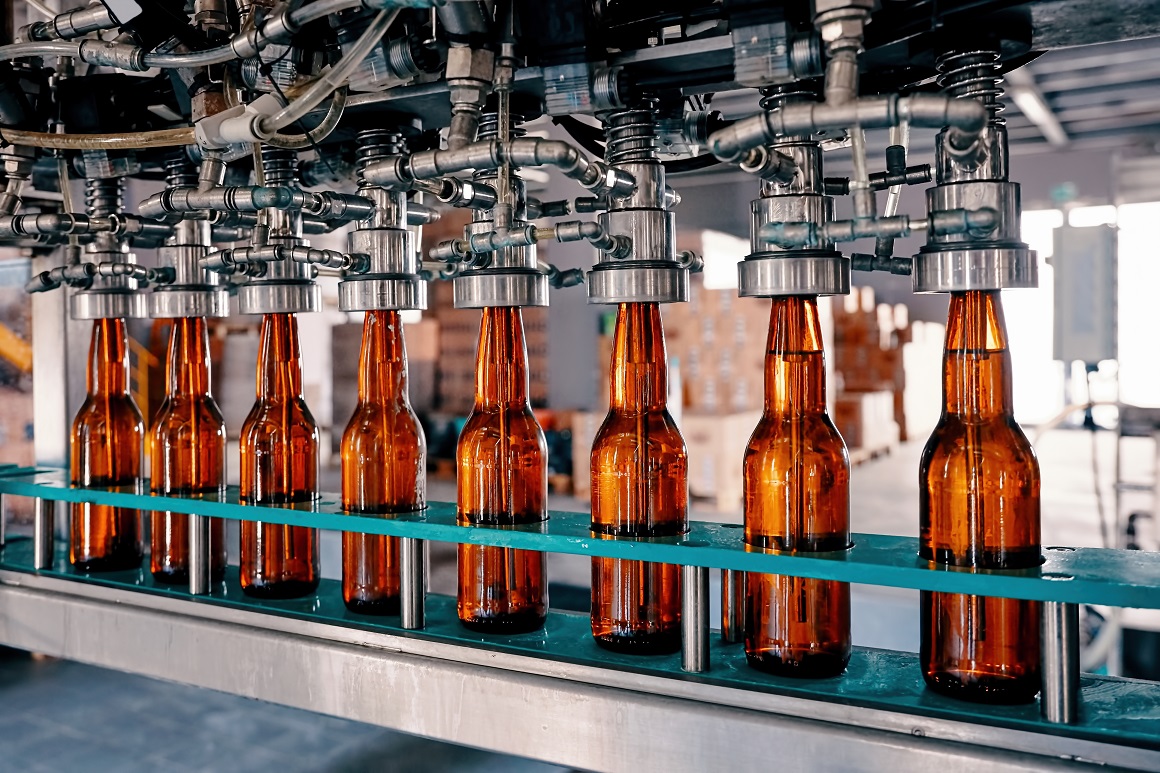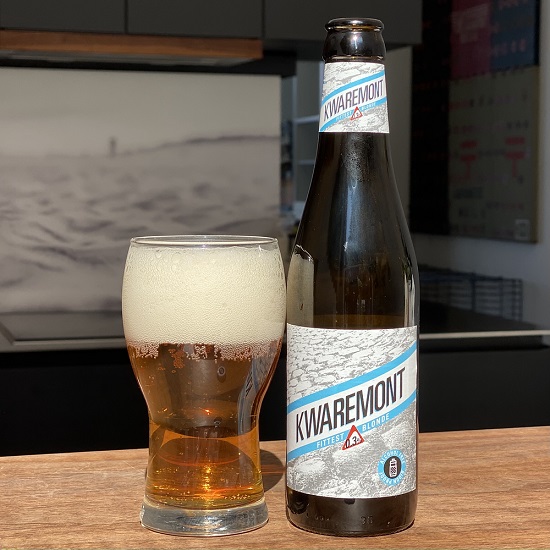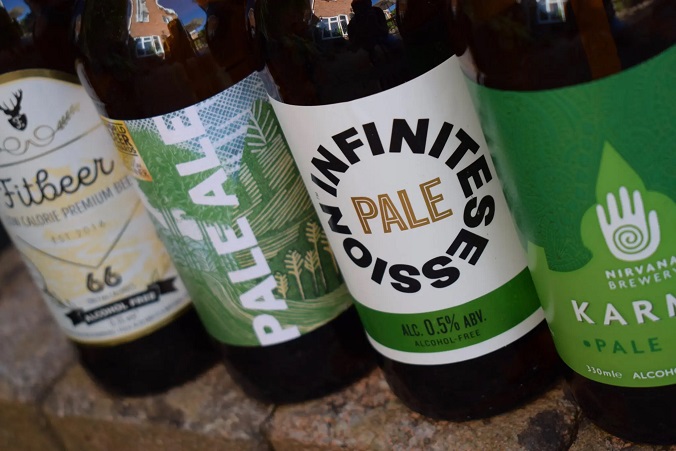There has been a growing number of public health initiatives around alcohol in recent years.
The Dry January campaign, which started in Britain and has now spread globally, encourages people to abstain from alcohol for the entire month as a way of combatting the excesses of the holiday season. Belgium has its version, Tournée Minérale, which takes place during February and fosters increased attention to improved nutrition and health.
Brewers have responded too: many of Belgium’s major commercial players have launched low and no-alcohol beers. The world’s biggest beer company, Leuven-based AB InBev – makers of Stella Artois Liberté (0.0% ABV) and Jupiler 0.0 (0.0% ABV) – has even said that by the end of 2025, at least 20% of the company’s global beer volume will consist of low and no-alcohol beers.
Regional Belgian family brewers have also been quick to gamble on low and no-alcohol beers. Brouwerij Roman of Oudenaarde’s Ramon (0.3% ABV) is an easy-drinking beer hopped with Hallertauer, Galaxy, and Simcoe.
Kwaremont 0.3 (0.3% ABV) is the low alcohol equivalent of Brouwerij De Brabandere of Bavikhove’s cycling-themed 6.6% ABV beer named for an iconic race climb. Sport Zot (0.4% ABV) is the low alcohol offering from Brouwerij Halve Maan in Bruges.
Earlier this year, the Duvel Moortgat group launched low-alcohol versions of both their iconic gnome-branded beer (Alcoholvrije Chouffe, 0.4% ABV) and their fruit beer (Liefmans Fruitesse 0.0, 0.0% ABV).
Even smaller, independent producers in Belgium have been recently getting in on the act. Brussels Beer Project has seen success with its trio of low alcohol ‘Pico’ beers, each of which finishes at 0.3% ABV: Pico Bello — dubbed by BBP as “the first Belgian alcohol-free craft beer”— is a hazy IPA, all citrus and tropical fruit; Pico Nova is a more bitter and piney West Coast IPA; and Pico Fruta is a fruit beer with flavours of peach, pear, and elderberry.
So what then is the future for low and no-alcohol beer consumption in Belgium, a country known for its characterful, high-strength ales and its traditional, slow-changing beer culture? Let’s look at the factors driving the phenomenon.
Slow but steady growth
Last December, the European Commission released a study on low and no-alcohol beverages. While the study explores the recent rise of all low and non-alcoholic beverages — wine, aromatised wine products, and beverages emulating spirit drinks — beer is where the low and no alcohol game is currently being played for real. Beer accounts for over 93% of the low and no-alcohol beverage market in Europe in terms of value (and 97% in terms of volume).
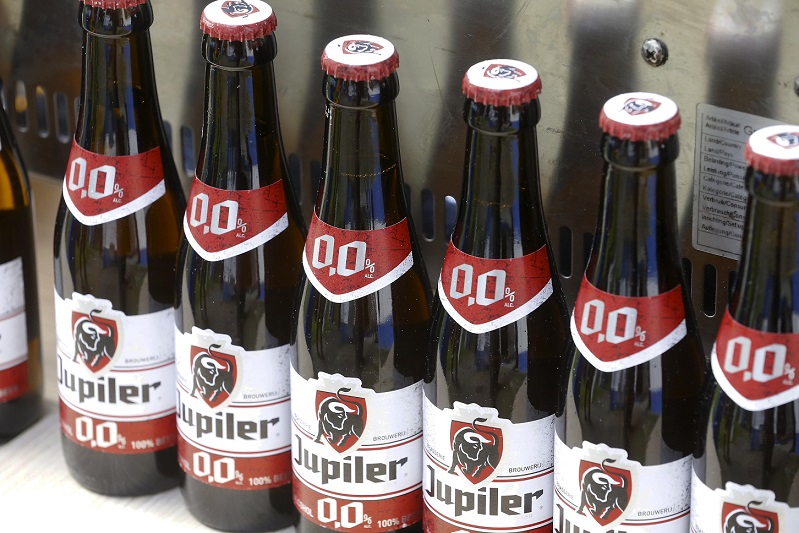
All the major brands are creating zero alcohol lines
While there is no agreed EU-wide definition of what constitutes low and no-alcohol beer, the various national definitions are not dissimilar from one another. In Belgium, sans alcool (no alcohol) beer is that with an ABV equal to or below 0.5%. Légèrement alcoolisée (lightly alcoholic) or pauvre en alcool (low in alcohol) is defined as between 0.5% and 1.2% ABV.
The Brewers of Europe, which includes 29 national brewing associations, reported at the end of last year that consumption of low and no-alcohol beer between 2012 and 2021 had risen from around 3.5% to just over 6% of the European beer market.
The Commission report goes further, concluding that the market for low and no-alcohol beer in 2021 was valued at approximately €7 billion (2.5 billion litres) — its share of the entire beer market coming in at around 7.2% in terms of value and 8% in terms of volume.
There are wide discrepancies in the growth of low and no-alcohol beer between various countries. In Sweden, for example, low and no-alcohol beer makes up a whopping 16.7% of the entire beer market; in Spain, it’s 15.9%; in Slovakia, 10.3%. In Belgium, however, low and no alcohol beer currently makes up only 3.1% of the beer market.
This lower growth rate is perhaps a result of a less malleable beer culture, with traditional attitudes to beer and a more restrictive distribution system. But despite this low market share, the Commission study reveals that the low and no-alcohol beer segment in Belgium did enjoy the highest growth rate recorded in the 2011-2021 period (alongside the Netherlands and Poland), and low and no alcohol in Belgium is forecast for the fastest growth to 2026 (alongside Poland, Finland, and France).
Indeed, the growth of low and no-alcohol beer across Europe is expected to outperform the growth of the market of beer with regular alcoholic strength.
Health-conscious
The main driver of consumer demand for low and no-alcohol beer is the perceived health benefits, which range from the freedom to drink low and no-alcohol versions of beer while driving or during pregnancy, to the wider health benefits of consuming less alcohol and fewer calories over longer periods.
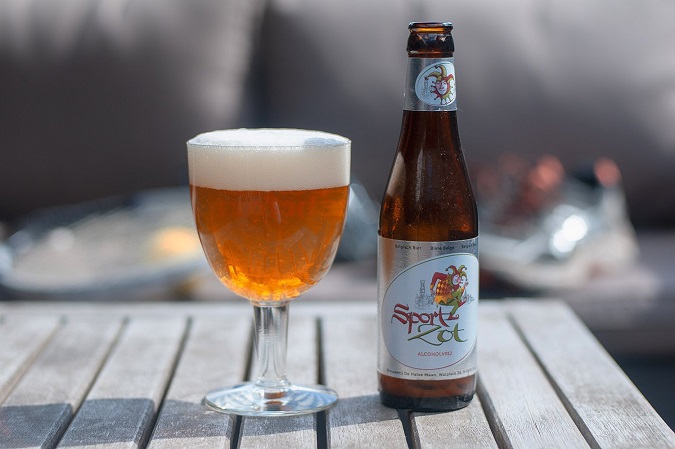
Zero and low alcohol beers are becoming popular too
Several producers have tried to capitalise on this consumer demand. Belgian beer company Force Majeur was launched in 2019 after Genk-based Ex-KPMG employee Stijn Panis completed an ironman triathlon in Nice but couldn’t find many Belgian low-alcohol beers.
Today, Panis contracts production of his beers at Brouwerij Eutropius in Menen, including a Traditional Blond, a Tripel, a “Tripel Hopped” beer, a Kriek, and a Bruin, all of which have an alcohol by volume content of 0.4%.
Thrive are a Belgian beer company that claims their Recovery IPA, developed in collaboration with the University of Leuven and produced at De Proefbrouwerij in Lochristi, is “the world’s first true sports beer with 10 grams of protein and no alcohol.” DrinkDrink!, a Belgian beer company that brews its beers at Brouwerij Anders in Halen, positions itself as a bike-loving beer brand, its Trottinette a low-alcohol IPA of 0.4% ABV.
Customer surveys and case studies carried out as part of the Commission study also highlighted the importance for consumers of low and no-alcohol beers having a similar taste to their alcoholic counterparts. The perceived difference in taste, together with a perceived low product quality are the main reasons consumers give for not trying low and no alcohol beverages (pricing, limited choice, and limited availability are others).
The initial offerings of low and no-alcohol beer in Belgium have tended to be in the Lager category. Today, however, there’s a much more diverse offering in terms of style and flavour. Cornet Oaked Alcohol Free from Brouwerij De Hoorn is a Belgian Blonde Ale of 0.3% ABV flavoured by adding oak chips. Zeven Zonden Avaritia from beer company Hugel is an Elderflower Ale of 0.5% ABV produced at The Brew Society in Heule. And Holy Roasty is a Coffee Stout of 0.3% ABV from Brasschaat-based beer company Galea, produced at Brouwerij Eutropius using cacao beans and vanilla beans.
Social drinking
A global survey carried out by campaign researchers Pulsar examined the social data behind “healthier” drinking habits and behaviours. They drew on data from Instagram, TikTok, Pinterest, Twitter, forums, news, and beyond to track mentions of low or no-alcohol drinks from May 2021 to November 2021.
Pulsar’s results suggest that drinking alcohol alternatives in a social setting, as opposed to soft drinks, for example, is as important as a desire to live healthier when it comes to deciding to choose a low or no alcoholic drink. These results are confirmed by the Commission study, which found that low and no alcoholic beverages represent a way of taking part in social gatherings for people that do not consume alcohol.
Pulsar found that abstinence on ethical grounds was often mentioned, and a more recent trend they saw was “mindful drinking” or seeking to pace oneself. The Commission study also found that religious-related consumption patterns are observed with interest by producers, potentially representing a fast-growing market segment.
How people in Belgium consume low and no alcohol beer has changed considerably in the last decade. In 2011, the on-trade value of low and no-alcohol beer made up 78% of the total low and no-alcohol beer market in Belgium. In 2021, however, that figure had completely reversed. Perhaps accelerated by the Covid-19 pandemic, the off-trade value of the segment in 2021 made up 70% of the total value of that market in Belgium (on-trade value dropped from 78% to 30%).
More Belgians are buying their low and no-alcohol beer in supermarkets, specialty beer shops, and convenience stores than they are in bars, cafés, and restaurants. This shift, according to the Commission study, confirmed that once a product becomes more and more established, its presence in large-scale distribution increases.
Technological advances
One key factor likely to affect how the segment grows, especially in Belgium, is the development of high-quality low and no-alcohol beer. In the past, it has been difficult for producers to make good low and no-alcohol alternatives. That is changing.
There are many ways to produce low and no-alcohol beer, but the main production techniques can be divided into two main categories: physical methods of removing alcohol; and biological methods of restricting alcohol formation.
The most common physical method of removing alcohol is dealcoholisation through distillation, either by thermal methods such as vacuum evaporation, or membrane methods such as reverse osmosis. Membrane technologies have made striking advances in recent years, drastically improving the quality of beer made using these techniques.
Given the more expensive equipment required to produce beers in this way, it’s most often the larger breweries working with processes like dealcoholistaion. Think Cristal 0.0 from Alken-Maes (Heineken) or Hoegaarden Wit 0.0 from ABInBev. There are some smaller, independent breweries taking the leap, however, such as Peak Brewery, based at Belgium’s highest point in the High Fens, with their Peak 0.0, a citrus forward Blonde Ale of 0.0% ABV which is produced by vacuum distillation.
The most common biological method used to restrict alcohol fermentation is the use of a specific yeast strain which will limit fermentation. In the past, there has been poor commercial availability of such yeast strains and a lack of knowledge of how to avoid flavour and aroma shortcomings from such fermentations. In the last few years, however, there have been some major breakthroughs in overcoming the flavour and aroma weaknesses of biological methods.
It’s particularly interesting given that these methods rarely require breweries to invest in the additional specialist equipment they’d need to pursue de-alcoholisation methods. The trio of Pico beers from Brussels Beer Project and the Ramon beer from Brouwerij Oudenaarde are good examples of beer produced using these new types of yeast strains.
Switching beers
Here in Belgium, brewers are already positioning low and no-alcohol beer as close as possible to their reference brands, pitching them as “premium products” and offering them as distinct alternatives to juices, soft drinks, and other drinks containing no alcohol. At the same time, continuing improvements in technology and know-how should allow more breweries to develop low and no-alcohol alternatives to their beers.
Because Belgians are loyal to the taste and quality image of their beer, they are likely to embrace low and no-alcohol versions of the beers they love - provided the quality is high. The low and no market segment is set to grow and grow.

